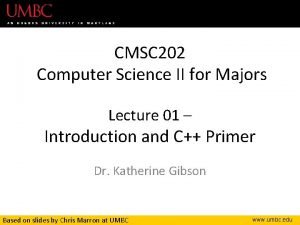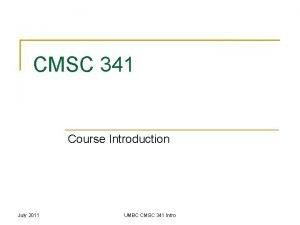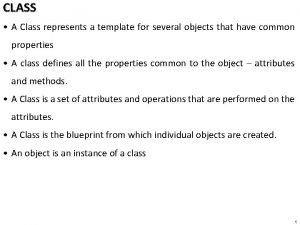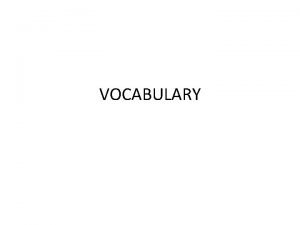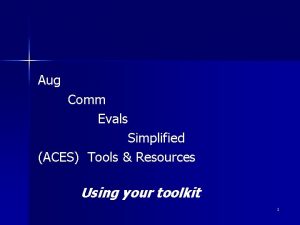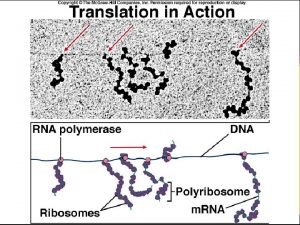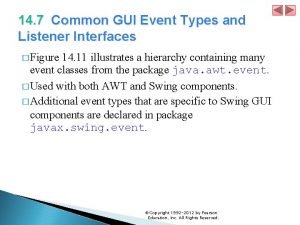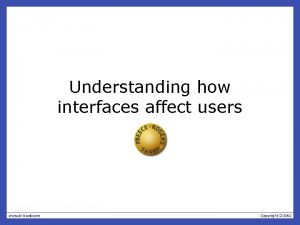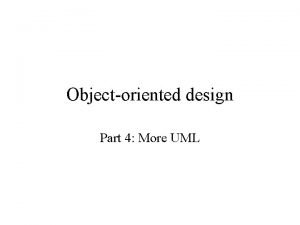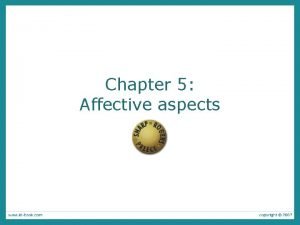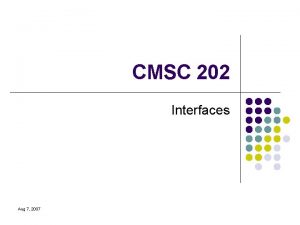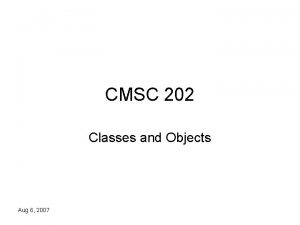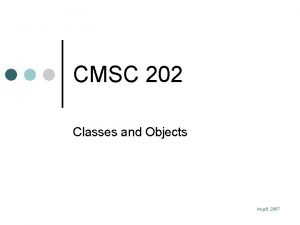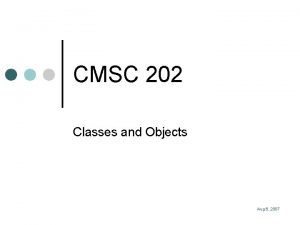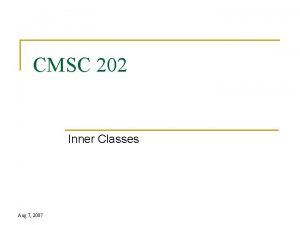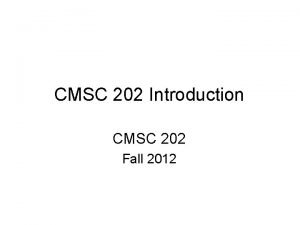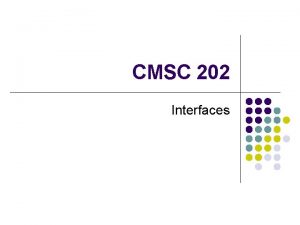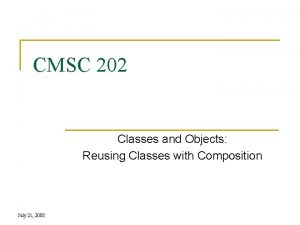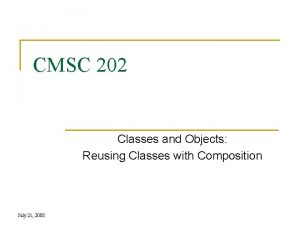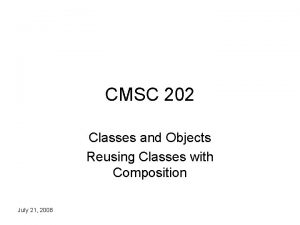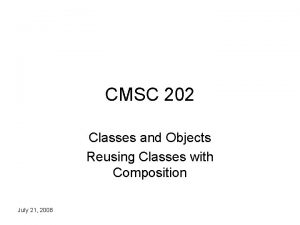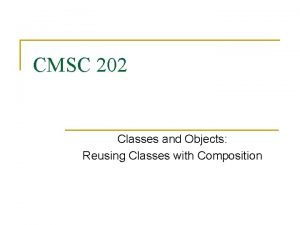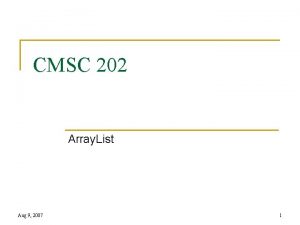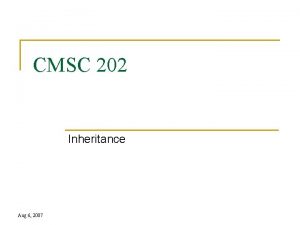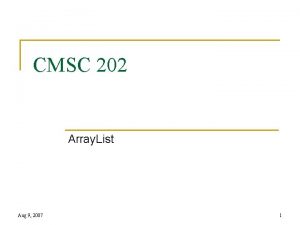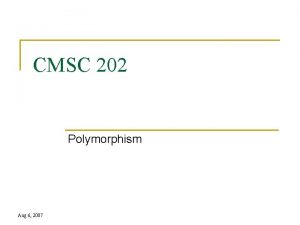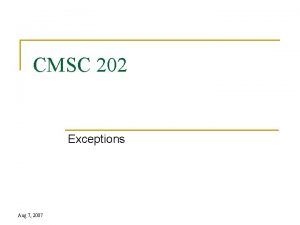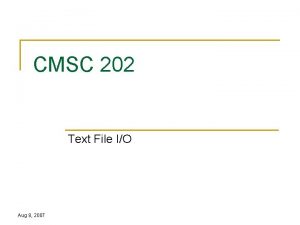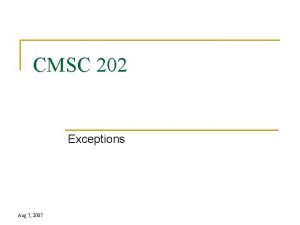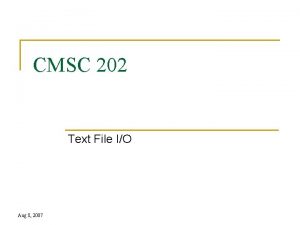CMSC 202 Interfaces Aug 7 2007 Classes and





















- Slides: 21

CMSC 202 Interfaces Aug 7, 2007

Classes and Methods l l When a class defines its methods as public, it describes how the class user interacts with the method. These public methods form the class’ interface. An abstract class contains one or more methods with only an interface – no method body is provided. Java allows us to take this concept one step further. Aug 7, 2007 2

Interfaces l l l An interface is something like an extreme abstract class. All of the methods in an interface are abstract – they have no implementations. An interface l l Aug 7, 2007 has no instance variables. Only defines methods. is NOT a class. is a type that can be satisfied by any class that implements the interface 3

Interfaces l The syntax for defining an interface is similar to that of defining a class l Except the word interface is used in place of class l An interface specifies a set of methods that any class that implements the interface must have l It contains method headings (and optionally static final constant definitions) only l It contains no instance variables nor any complete method definitions Aug 7, 2007 Copyright © 2008 Pearson Addison-Wesley. All rights reserved 4

Interfaces l An interface and all of its method headings should be declared public l They cannot be given private, protected, or package access l When a class implements an interface, it must make all the methods in the interface public. l Because an interface is a type, a method may be written with a parameter of an interface type l That parameter will accept as an argument any class that implements the interface Aug 7, 2007 Copyright © 2008 Pearson Addison-Wesley. All rights reserved 5

Implementing an Interface l l To create a class that implements all the methods defined in an interface, use the keyword implements. Whereas interface defines the headings for methods that must be defined, a class that implements the interface defines how the methods work. Aug 7, 2007 6

The Animal Interface public interface Animal { public void eat( ); } Yes, animals do more than eat, but we’re trying to make this a simple example. Aug 7, 2007 7

Interfaces To implement an interface, a concrete class must do two things: l 1. 2. Aug 7, 2007 It must include the phrase implements Interface_Name at the start of the class definition – If more than one interface is implemented, each is listed, separated by commas The class must implement all the method headings listed in the definition(s) of the interface(s) Copyright © 2008 Pearson Addison-Wesley. All rights reserved 8

Implementing Animal // Lion and Snake implement the required eat( ) method public class Lion implements Animal { public void eat() { System. out. println("Lions Devour"); } } public class Snake implements Animal { public void eat() { System. out. println( "Snakes swallow whole"); } } Aug 7, 2007 9

Implementing Animal // Dog implements the required eat( ) method and has // some of its own methods and instance variables public class Dog implements Animal { private String name; Dog(String new. Name) {name = new. Name; } public void eat() {System. out. println("Dog chews a bone"); } } // Poodle is derived from Dog, so it inherits eat( ) // Adds a method of its own public class Poodle extends Dog { Poodle( String name ) { super(name); } // call Dog constructor public String to. String( ) { return "Poodle"; } } Aug 7, 2007 10

Implementing Animal // Using classes that implement Animal public class Jungle { public static void feed( Animal a ) { a. eat(); } public static void main( String[] args ){ Animal[ ] animals = { new Lion( ), new Poodle( "Fluffy“ ), new Dog( "Max“ ), new Snake( ) }; for (int i = 0; i < animals. length; i++) feed( animals[ i ] ); } } // --- Output Lions Devour Dog chews a bone Snakes swallow whole

Extending an Interface l An new interface can add method definitions to an existing interface by extending the old interface Tired. Animal extends Animal { public void sleep( ); } The Tired. Animal interface includes both eat( ) and sleep( ); Aug 7, 2007 12

Interface Semantics Are Not Enforced l When a class implements an interface, the compiler and run-time system check the syntax of the interface and its implementation l However, neither checks that the body of an interface is consistent with its intended meaning l Required semantics for an interface are normally added to the documentation for an interface l It then becomes the responsibility of each programmer implementing the interface to follow the semantics l If the method body does not satisfy the specified semantics, then software written for classes that implement the interface may not work correctly Aug 7, 2007 Copyright © 2008 Pearson Addison-Wesley. All rights reserved 13

The Comparable Interface l l The Comparable interface is in the java. lang package, and so is automatically available to any program It has only the following method heading that must be implemented (note the Object parameter) public int compare. To(Object other); l l It is the programmer's responsibility to follow the semantics of the Comparable interface when implementing it When implementing compare. To, you would of course overload it by using an appropriate parameter type Aug 7, 2007 Copyright © 2008 Pearson Addison-Wesley. All rights reserved 14

The Comparable Interface Semantics l The method compare. To must return l l A negative number if the calling object "comes before" the parameter other A zero if the calling object "equals" the parameter other A positive number if the calling object "comes after" the parameter other If the parameter other is not of the same type as the class being defined, then a Class. Cast. Exception should be thrown Aug 7, 2007 Copyright © 2008 Pearson Addison-Wesley. All rights reserved 15

The Comparable Interface Semantics l Almost any reasonable notion of "comes before" is acceptable l l In particular, all of the standard less-than relations on numbers and lexicographic ordering on strings are suitable The relationship "comes after" is just the reverse of "comes before" Aug 7, 2007 Copyright © 2008 Pearson Addison-Wesley. All rights reserved 16

compare. To for Person public class Person implements Comparable { If obj is not a Person object a private String name; Class. Cast. Exception. . . will be thrown public int compare. To( Object obj ) { Person p = (Person)obj; return name. compare. To(p. name); }. . } Comparing the names using String’s compare. To method Aug 7, 2007 17

Using Comparable // prints the index of the smallest Integer in an array // Note use of Integer, not int public class Find. Smallest { public static void main( String[ ] args) { // find the smallest Integer in an array // Integer (implements Comparable ) int index = 0; // index of smallest value Integer[ ] values = { new Integer(144), new Integer(200), new Integer(99), new Integer(42), new Integer(132) }; for (int i = 1; i < values. length; i++) { if ( values[ i ]. compare. To( values[ index ] ) < 0 ) index = i; } System. out. println("Index of smallest value is “ + index); } } Aug 7, 2007 18

Implementing Multiple Interfaces l Recall the Animal interface from earlier public interface Animal { public void eat( ); } l Define the Cat interface Just separate the Interface names with a comma public interface Cat { void purr( ); // public by default; } // since a Lion is an Animal and a Cat, Lion may wish // to implement both interfaces public class Lion implements Animal, Cat { public void eat( ) {System. out. println(“Big Gulps”); } public void purr( ) {System. out. println(“ROOOAAAR!”); } } Aug 7, 2007 19

Inconsistent Interfaces l In Java, a class can have only one base class l l This prevents any inconsistencies arising from different definitions having the same method heading In addition, a class may implement any number of interfaces l l Aug 7, 2007 Since interfaces do not have method bodies, the above problem cannot arise However, there are other types of inconsistencies that can arise Copyright © 2008 Pearson Addison-Wesley. All rights reserved 20

Inconsistent Interfaces l When a class implements two interfaces: l l Inconsistency will occur if the interfaces contain methods with the same name but different return types If a class definition implements two inconsistent interfaces, then that is an error, and the class definition is illegal Aug 7, 2007 Copyright © 2008 Pearson Addison-Wesley. All rights reserved 21
 Cmsc 202
Cmsc 202 Umbc cmsc 202
Umbc cmsc 202 What is difference between abstract class and interface
What is difference between abstract class and interface Difference between abstract classes and interfaces
Difference between abstract classes and interfaces Bene words
Bene words Aug methionine start codon
Aug methionine start codon Universal codon chart
Universal codon chart Setyembre 22 1891
Setyembre 22 1891 Aug q
Aug q Aug comm device
Aug comm device Transkripsjon og translasjon
Transkripsjon og translasjon Classe e subclasse de palavras 6 ano
Classe e subclasse de palavras 6 ano Pre ap classes vs regular classes
Pre ap classes vs regular classes Dialogues
Dialogues Gui event types in java
Gui event types in java Which are not purely surface phenomena
Which are not purely surface phenomena Expressive interface
Expressive interface Web user interfaces
Web user interfaces Uml interfaces are used to:
Uml interfaces are used to: Industrial interfaces
Industrial interfaces Expressive interfaces
Expressive interfaces Blueprint interfaces
Blueprint interfaces
